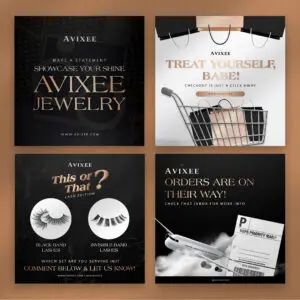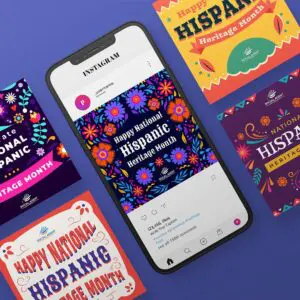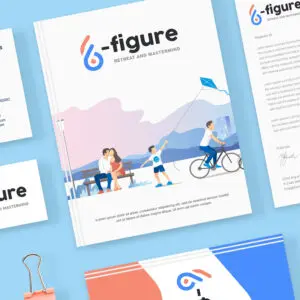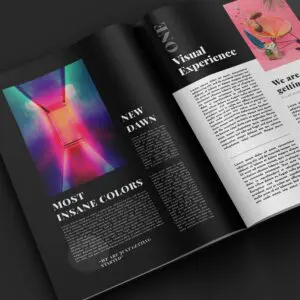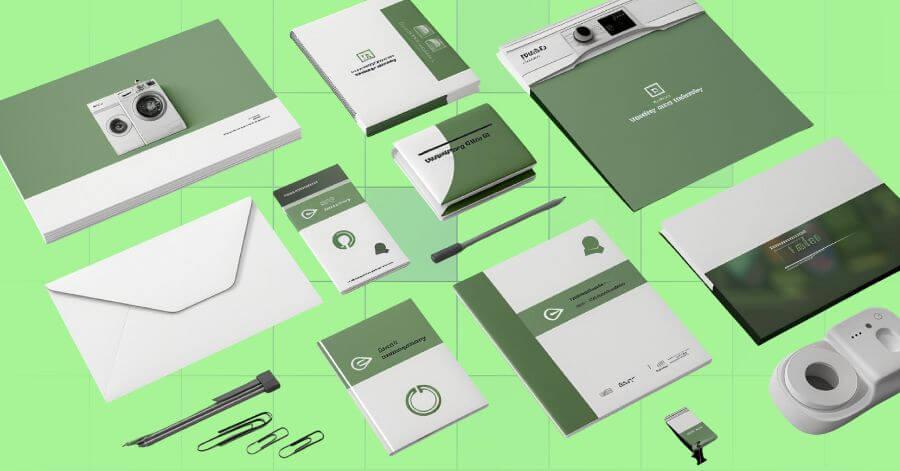
One of the most commonly misunderstood terms in business is corporate identity. The misconception is that it is all about logos and only applies to specific industries, such as technology, legal, or banking. However, corporate identity, or sometimes referred to as business identity, is a crucial aspect to business success. Let’s delve deeper into what it is, its processes, industry examples, and top corporate identity services you can consider.
What Is Corporate Identity?
Corporate identity involves the actions of a company and how it is presented to the public. It is how the organization behaves, communicates, and is perceived by consumers. A strong corporate identity is essential because it allows a company to get recognized by its potential customers and differentiate itself from competitors. In addition, internal stakeholders, such as employees, investors, and partners, contribute to its identity.
The three critical elements of corporate identity are corporate communications, corporate design, and corporate behavior. Let’s tackle them one by one.
Corporate Communications
Information is regularly shared with internal and external audiences of an organization. That’s why creating a consistent message across all company channels is essential. Corporate communication can include:
- Policies and procedures
- Internal and external memos
- Newsletters
- Advertisements
Corporate Design
Sample corporate design made by Penji
Visual aspects are also crucial in building a solid corporate identity. These elements include the following:
- Company name
- Letterhead
- Logo design
- Brand color palette
- Brand visuals
- Fonts
- Tagline
- Business cards
Corporate Behavior
Corporate behavior includes the company’s philosophy, mission statement, and values, as well as the company’s ethical code of conduct and corporate social responsibility. In essence, corporate behavior embodies how a company acts, followed by various scenarios triggered by political, social, environmental, technological, and legal factors.
What is the Difference Between Branding and Corporate Identity?
While “branding” and “corporate identity” are often used interchangeably, they represent distinct aspects of an organization’s image.
Branding focuses on the specific characteristics, ethics, and target audience associated with a particular product or service. It’s like crafting a unique personality for that product, shaping how consumers perceive its purpose, values, and benefits.
On the other hand, corporate identity encompasses the company’s broader characteristics, values, and overall mission. It represents the company’s DNA, encompassing its culture, vision, and the core principles that guide the development of all its products and services.
Big companies with many products win by understanding this difference. They can use their company’s overall image (corporate identity) to make people trust them. At the same time, they can create unique messages for each product to reach the perfect customer.
Importance of a Corporate Identity
A strong corporate identity helps companies achieve two big goals:
Standing Out: It creates a clear and consistent image that sets them apart from competitors. This makes them more recognizable and memorable to customers.
Building Strong Relationships: It fosters customer trust and loyalty by communicating the company’s values, culture, and mission. This can result in increased customer engagement and reduced advertising costs in the long run.
How Do You Create a Corporate Identity?
While a reputable graphic design and branding service can do all your branding requirements for you, it pays to know the processes. Below is a five-step method toward a solid corporate identity.
1. Conduct a brand audit.
The first step highlights the areas where the organization excels and identifies areas for improvement. To do this, determine the factors that contribute most to the brand’s success and how consumers think about its products or services. Likewise, an in-depth competitor analysis allows you to understand:
- Who do you compete with for market share
- How to differentiate the brand
- What strategies to consider?
2. Improve your messaging statements.
Craft strong messages that highlight values and offer something unique. Connecting your company’s core values to what truly matters to your target audience is crucial. Also, emphasize what sets you apart and how it benefits your customers. These actions build your corporate identity and lead to clear messaging.
3. Develop your creative elements.
After crafting your key messaging, it’s crucial to consider the visual elements that will complement them. This includes design components like your logo, fonts, colors, and advertising content. Remember physical aspects that contribute to your brand voice, such as storefront design, interior layouts, and staff uniforms.
4. Implement beneficial strategies
You may implement business strategies to strengthen the brand. For example, create a content marketing strategy that communicates your brand story and unique value to your target audience. Coordinate outreach to your customers through traditional marketing and social media platforms. These strategies help ensure that organizational objectives, brand reputation, and marketing activities remain consistent.
5. Analyze and modify
Consumer tastes and markets constantly evolve, so be prepared to adapt your brand identity. Regularly assess your business performance and public perception. This feedback loop lets you refine your brand presentation to ensure it continues to reflect your company’s core values and resonate with your audience.
Top 6 Companies that Offer Corporate Identity Services
Once you understand the process, it’s time to find the right corporate identity services that suit your needs. Check out the top five companies in the United States that offer branding services.
1. Penji
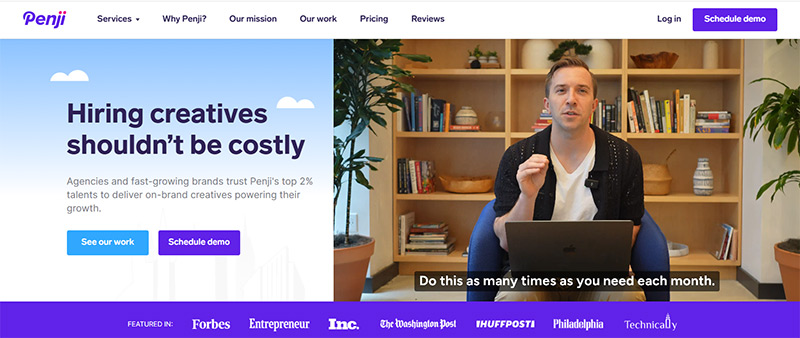
While it may seem biased, the first on this list is, of course, Penji. With only the top 2% of graphic designers working on your brand identity, you’re sure to get high-quality branding elements. Instead of juggling with unreliable freelancers or DIY tools, our dedicated team of pro designers will craft your logo, brand guidelines, and marketing materials.
2. Single Grain
Single Grain offers specialized eCommerce, SEO, PPC, and lead generation marketing expertise. In addition, the agency helps brands boost their ROI and conversions significantly.
3. Jacob Tyler
Jacob Tyler is an all-around brand experience agency that crafts strategies to elevate brand presence, foster customer loyalty, and drive business growth. The proactive team of strategists, designers, and developers work together to deliver captivating brand messages.
Operating since 2000, the agency excels in making brand stories immersive across various platforms.
4. REQ
REQ is a distinguished digital marketing agency catering to the needs of leading technology, healthcare, and finance organizations. The firm specializes in creating corporate identity and promoting security and connection. Their efforts have been recognized in Adweek 100, Inc. 500, and Deloitte Fast 500.
5. Starfish

Starfish is a premier NYC-based branding agency that excels in crafting immersive brand experiences. Recognized for their work with elite clients like AVIS and PwC, Starfish seamlessly connects every customer touchpoint to ensure a compelling brand narrative.
6. J2

This strategic branding agency focuses on creating brands with a positive global presence. J2‘s corporate brand identity services also include crafting values and a mission toward transformative brand experiences.
Famous Brands and Their Corporate Identities
Several large corporations are good examples of effective corporate identity and brand guidelines. Let’s explore two powerhouses:
Apple: The Allure of Exclusivity
There’s a reason Apple‘s logo is instantly recognizable. Their corporate design is linked to exclusivity and consistent messaging. Apple’s name carries a strong influence on technology and innovation.
From the revolutionary Macintosh computer to the cutting-edge iPhone and iPad, the tech giant has become a blueprint for modern marketing.
Spotify: Embracing Evolution
Spotify is another masterclass in corporate identity. As they’ve transformed from a streaming platform to a global entertainment brand, they’ve cleverly adapted their visual identity to connect with new audiences.
In 2015, Spotify underwent a significant rebranding. Instead of a limited green and white palette, they embraced a vibrant spectrum of 31 colors and gradient textures. This move gave them a bolder, edgier image, rivaling traditional entertainment giants.
Spotify is a powerful reminder that a strong brand is a living entity. In 2020, they further refined their brand with a revised color palette, updated fonts, and even a new animation style – a testament to their commitment to staying relevant and engaging.
Conclusion
Whether considering a brand refresh to modernize your look or a complete overhaul to reflect better your company’s evolution, a successful rebranding requires meticulous attention. And if you need visual elements from a trusted branding service, Penji can help. Watch a video demo to learn more about our unlimited graphic design services.
About the author

Rowena Zaballa
With a background as a former government employee specializing in urban planning, Rowena transitioned into the world of blogging and SEO content writing. As a passionate storyteller, she uses her expertise to craft engaging and informative content for various audiences.

